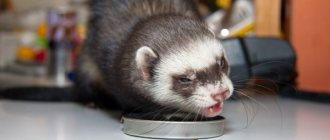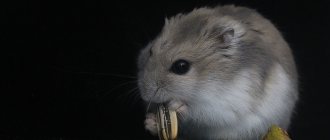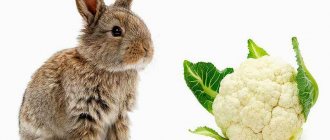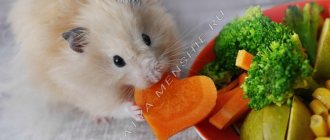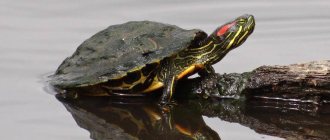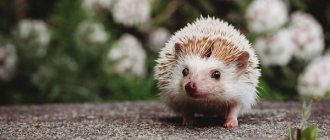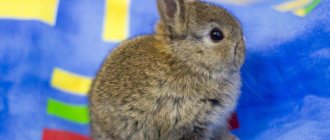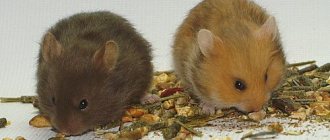Rodents 7318
The sugar squirrel is the smallest marsupial in the world. This is an incredibly charming marsupial: the fur is pleasant to the touch, like plush, large eyes like saucers and a soft pink nose. The possum has excellent manners: he is unusually good-natured, endlessly curious and easily tamed. The sugar glider has many names, which will be used periodically throughout the article.
Portrait of a sugar glider
Sugar gliders are small animals: their body length varies from 13 to 32 cm; the tail is longer than the body - 15-33 cm, weight on average 85-160 g. Large bulging eyes stand out on the short, slightly pointed muzzle. The tail of the marsupial flying squirrel is so flexible that it can easily twist it in the form of a spiral and even carry small objects in this way.
Externally, the possum looks a little like a flying squirrel - between the legs of both of them there are flying membranes. However, unlike the squirrel, it is not a rodent, but a marsupial mammal.
The predominant color of the sugar glider is gray, the belly is white. A long brown stripe runs from the tip of the nose to the tip of the tail. There are also stripes on the sides of the muzzle. The animals' fur is soft and silky, and their tail is fluffy. With age, the fur becomes somewhat dull, the abdomen first becomes yellowish, and then yellow-red.
Males differ from females in being larger in size; they have a large spot on their forehead (frontal gland), which appears when they reach puberty and continues to grow throughout their lives. Females have a pouch for carrying their young (like a kangaroo).
Appearance and description
As you may have noticed, sugar gliders are quite small in size. The animal was even able to take a leading position, as the smallest representative of the possum family.
The creature is only 120 to 220 mm long, with a tail of about 160 mm. Already an adult weighs extremely little - 140 grams.
If you look at the photographs, you can see that there is a dark stripe running down the back from the nose to the very backside. Stripes are also present on the muzzle.
As we know, a flying squirrel has folds of skin between its legs, so our little possum was not left out either.
They also have the same kind of membranes between their front and hind legs, and they use them for flight. Therefore, some believe that squirrels and possums are almost the same creature, although this is not the case.
The only difference between a female and a male is that the female has a small leather pouch for her cubs. When an animal jumps from one point to another, opening its wings, it looks like a flying square flap.
Jumping from a tree, the animal spreads all its limbs wide, creating the semblance of a small parachute, and can calmly control and change the trajectory of its flight. By the way, with the help of their folds of skin, sugar animals can soar at distances of up to 50 meters.
They usually do this to search for food, or to search for a nest. They can also communicate with each other, sending many different signals and sounds. For example, both simply for communication and to warn of danger!
Lifestyle in nature
The sugar glider lives in eastern Australia, New Guinea and Tasmania; found in open deciduous forests, with particular preference for eucalyptus.
Secretive animals are nocturnal, but during the day they rest in their nests, located, as a rule, in hollows and, sometimes, in the grass. They cover the nest with leaves, dry grass, twigs - the animals carry all the building material in their tail, curling it into a spiral. With the onset of darkness, an active life begins for sugar gliders: they move through the trees, covering considerable distances during the night.
Animals climb equally well both up and down. And for gliding, the animals have a special device - a flight membrane, which stretches from the fifth finger of the forelimb to the ankle joint of the hindlimb. The “flight” is coordinated by the tail and paws.
Marsupial flying squirrels eat fruits, pollen, and some invertebrates.
Sugar gliders are social animals. In their natural environment, they live in groups (clans, families) consisting of 7-12 individuals of different ages. Each clan occupies a relatively large territory. One male dominates the family - he guards the territory, and he also fertilizes most of the females. Marsupial flying squirrels are territorial animals; they do not tolerate strangers with a different smell. Males have scent glands with which they mark not only their territory, but their entire flock.
The breeding season for marsupial flying squirrels is from April to November, the number of litters per year is no more than two, and the number of cubs in a litter is no more than three. Pregnancy in these animals lasts only 16 days, and after birth the babies migrate independently into the pouch. In the pouch they are attached to the nipple and hang on it for approximately 5 weeks. The cubs begin to emerge from the pouch at the age of 70-74 days, but feed on mother's milk for about another month and a half. Males reach sexual maturity at 8-15 months, females at 12 months.
Marsupial flying squirrels do not like the cold. When the air temperature drops and during the rainy season, the metabolism of flying squirrels slows down, body temperature drops to 1-6 ° C, i.e. they fall into a state of stupor. The possum can spend several weeks in seasonal torpor (hibernation).
Possums are very sociable and make a wide variety of sounds. At the moment of excitement and joy they crackle, to attract attention they “yelp”, fear or anger is accompanied by a roar. They greet each other with hissing, which is sometimes accompanied by a kind of “dance”.
Reproduction
Features of sexual development
Breeding sugar flying squirrels at home is a rather responsible and expensive task. It is difficult to call possum breeding a profitable business. It requires a lot of time (the female takes care of the cubs for more than 4 months) and the presence of an isolated and spacious room.
Many breeders say that females who are expecting or nursing offspring become much less friendly and affectionate. For various reasons (stress, genetic predisposition, early pregnancy, and many others), females can abandon their own cubs or even eat them. Therefore, before deciding to purchase a pair of opposite sexes, you should carefully think through all the nuances of the future keeping of the animals.
Males and females reach puberty at different ages: males starting at 4 months, females at six months. However, parental responsibilities should be assigned to animals no earlier than a year. The mating season usually occurs in June-July. Animals bear offspring 1–2 times a year. For mating, you should not choose individuals that are in a related relationship - this can lead to pathologies in the cubs.
Pairing
Mating occurs within 24 hours after the female starts estrus. She may behave excitedly, make calling sounds, and refuse food. The male looks quite aggressive from the outside: he bites the back of his resisting female friend and even inflicts wounds on her. But for possums this is normal behavior. The wound, if it appears, should be treated to prevent infection. If the future father continues to disturb the female, she needs to be placed in another cage until she recovers completely.
Pregnancy and childbirth
Pregnancy lasts 15 – 16 days. There is no need to remove the male from the cage during pregnancy. He does not interfere with his friend, and after giving birth he also helps her care for her offspring.
Feeling the approach of childbirth, the female carefully licks the pouch on her stomach, and after giving birth, she also licks the path for the offspring - from the genitals to the pouch. The tiny squirrel covers this path on its own in literally 5 minutes.
Despite the fact that there are 4 nipples in the bag, the offspring usually does not exceed 1 - 2 babies. The possum stays in the pouch for about 9 - 10 weeks, without tearing itself away from the mother's nipple - it swells in its mouth, and the baby literally sticks to it.
During the period of feeding “babies”, the female’s diet should be increased - at the rate of plus 50% for each cub.
After some time, the babies move from their mother's pouch to their parents' backs, and then become independent. At the age of 4 months they can already be separated from the female.
Keeping sugar gliders at home
Buying a sugar glider today is not a problem. But before you decide to take such a responsible step, learn as much as possible about the characteristics of the animal itself, its content, as well as the difficulties that you will have to face.
Difficulties
First of all, keep in mind that sugar gliders, as social animals, are not recommended to be kept alone. The best option (from the point of view of possums) is a group of animals, or at least a couple. It is not necessary to keep individuals of different sexes; 2 males or 2 females will quite peacefully coexist. If you have only one pet, you will have to pay maximum attention to him, otherwise the animal will be very bored and suffer.
If you want to achieve affection from an exotic animal, it is better to purchase a young animal about four months old, and it is better, of course, from a breeder. This way you can choose an animal you like, as well as receive competent advice on maintenance and care.
You can communicate with nocturnal pets in the evening (they begin to be active around 10 p.m.) and early in the morning. And so that at night you are not bothered by the rattling of the cage bars, yapping, whistling, chirping and similar sounds, make sure that the cage is located away from your bedroom. Don’t try to “restructure” sugar gliders to a daytime regime - it’s absurd to argue with nature.
The animals also cannot boast of being neat: it is impossible to accustom them to the tray. In addition, bedding, as well as leftover food, will lie not only in the cage, but also outside it.
Possums love to mark their territory with an odorous secretion, and males are especially guilty of this. The smell of the secretion is quite pungent and specific. Do not think that frequent washing of the cage will get rid of odors - after cleaning the animal will mark the cage with redoubled force. You can clean the cage several times a day, but the smell will still be there. The owners of these creatures claim that you quickly get used to the “scents” of possums. This may be true, but won't you get tired of explaining this to your guests?
Next point. Keeping possums in a cage all the time will not work - they need to jump, walk on the walls and ceiling, ride on the owner’s shoulder or sit in the pocket of his robe. You will have to make the room available to them regularly. The animal will immediately find itself under the ceiling and will glide down with pleasure, straightening its membrane. Needless to say, after free walks you will have to arm yourself with cleaning equipment and “cover up the traces” of your pet’s life.
If you do not plan to breed possums, it is better to castrate the male - this way he will smell less and his character will improve. Due to the special structure of the intimate organs and the small size of the animal, it is undesirable to sterilize the female.
Housing
Although the animal itself fits in the palm of your hand, it will need a spacious cage. The animal is very active, and its native element is trees, and therefore, even if regular walks around the apartment are possible, you should not lock it in a small cage. The minimum size of an apartment for a pair of animals is 60x60x80 cm, but larger is better, of course. The distance between the bars of the cage should be no more than one and a half centimeters.
Feeding
The most important question that the happy owner of a sugar glider will have to face is what to feed the animal. Proper nutrition is the key not only to health, but, consequently, to a long and happy life. The smell and mood of your pet also depend on this.
In the wild, the sugar squirrel is an omnivore. The main part of its diet consists of fruits and insects. When feeding, you should adhere to the following principles and rules:
- The 70 to 30 rule – 70% of the diet is protein, the remaining 30% is carbohydrates.
- The feeders are filled with food and the drinking bowl with fresh water immediately before the flying squirrels wake up - at approximately 9 - 10 pm. In the morning, you need to clean the feeders and leave the water. If a possum has access to food 24 hours a day, it will suffer from obesity. Representatives of this subspecies are able to wake up in the daytime and sleepily drag a treat into the nest, falling asleep on the move, often with an unchewed piece of food in their paws. The maximum that can be left for the possum during the day is a piece of fruit or dried fruit, as well as a little juice diluted with water.
- If your pet doesn't drink for a long time, don't be alarmed. Sugar squirrels can get enough moisture from fruits. Despite this, water in the drinking bowl must be constantly present in the cage. It is better to use filtered or bottled water and change it at least once a day to prevent harmful bacteria from growing in it.
- Foods from the human table are prohibited for feeding: fatty, spicy, fried, salted, sausages, etc. The maximum that can be allowed is chicken or turkey meat, cooked without salt and spices.
- Sweets (honey, fruits) can be given to the animal in limited quantities - as a treat, to support the female during pregnancy and feeding the cubs.
- The food should contain as much calcium as possible (the domestic sugar glider is very sensitive to its deficiency) and as little phosphorus as possible.
- All vegetables and fruits should be cut into fairly large pieces that will be easy for the squirrels to pick up in their paws. The animal will not like small pieces.
Products necessary for the normal development of the dwarf flying squirrel:
Protein
- Insects – you can feed your pet live grasshoppers, fly larvae, crickets, mealworms and zoophobas (Latin worms, a favorite delicacy of the sugar glider). The daily norm for an adult older than six months is 2–3 zoophobass per day, 5–8 mealworms or 1–2 large banana crickets. All of these insects can be purchased at a pet store. Many sugar glider breeders breed gliders in plastic containers with sawdust. They eat cucumbers, apples and cereals. They can live up to 3 months. You can also feed the possum no more than once a week with one-day-old chicks or other small chicks.
- Meat - about 30 grams per day per individual, boiled without salt and spices, lean (chicken or turkey).
- Fermented milk products - no more than 2 times a week: natural low-fat cottage cheese, kefir, yogurt, fermented baked milk, children's curds and yoghurts without preservatives and additives, including sugar-free.
- Quail eggs without shell - no more than once every 7-10 days.
- Baby food – puree for first feeding, possibly with meat.
- Porridge - once every 7 - 10 days, they must be cooked exclusively in water, since milk is extremely harmful for flying squirrels. The healthiest ones are oatmeal and buckwheat, you can add fruits, dried fruits, candied fruits, honey (literally a drop per serving).
Carbohydrates
- Whole fruits and vegetables are the main source of carbohydrates. A possum needs about 35–40 grams of fresh, unprocessed fruits and vegetables of various types per day. These can be peaches, oranges (if the possum is older than six months), kiwis, apples, pineapples, bananas, avocados, watermelon, melon, cucumbers, tomatoes, sweet potatoes, mangoes, papaya, carrots. Products with a laxative effect (beets, pears, plums) should not be offered to your pet.
- Juices and fruit purees – up to 20 ml per day. It is advisable to give the animal freshly squeezed juices diluted 1:1 with water, or juices and purees intended for children under 3 years of age, without preservatives and sugar.
- Any dried fruits, except prunes - 1 - 2 pieces per day (cherries, pineapple, dried apricots, etc.).
Treats
- Nuts – 2 small or 1 large nut per week (peanuts, hazelnuts, pine).
- Honey - only as an additive to the main food, about 1.5 teaspoons per week.
- Drops – no more than one per day.
Possums in their natural environment
In the wild, you can meet the possum in Australia, Tasmania, New Guinea, as well as on the adjacent islands.
Possums are nocturnal animals, their peak activity occurs in the dark, and during the day the pets sleep. Animals usually nest in tree cavities and hollows.
Possums are not loners, they are social animals that live in small flocks. One flock, as a rule, includes up to 7 mature individuals, as well as broods of the new breeding season.
A flock cannot exist without a leader. Possums also have one. The leader becomes a mature dominant male, who marks the territory with his secretion. This territory is jealously guarded; strangers who enter the territory are immediately expelled from its borders.
Possums love warmth; with the onset of cold weather, the animals hibernate. Of course, under natural conditions, sugar squirrels hibernate much more often than their domestic counterparts.
How to care for an opossum at home?
- An opossum, like a cat, can wash itself with its paws. But, unlike cats, the former love to swim.
- By the way, if you suddenly notice that your pet smells unpleasant, it means he may be sick. In this case, you will have to urgently show the animal to the veterinarian, since a healthy possum never produces foreign odors.
- If you do not plan to breed opossums, castrate the male. In this case, its natural smell will be significantly reduced.
- How to care for an opossum at home? The main hygiene processes for an opossum are as follows - just clean your pet’s cage more often. Do this at least once every 7 days.
Flying squirrels at home
Flying squirrels are very active. If you decide to keep a possum at home, you need to take care of a spacious cage or enclosure. The minimum cage size for keeping an animal should be 80x80x60. But the higher the cage, the more comfortable your pet will be.
The distance between the bars should not exceed 1.5 cm, otherwise the pet may squeeze between the bars and even fall out.
The cage door must be equipped with a strong lock or carabiner. Possums are very inventive animals; they easily learn to open an unfixed passage.
The floor in the cage should be covered with a special filler intended for rodents (pressed sawdust). You can purchase the filler at any Zoogalereya retail store.
There must be branches in the possum's cage. After all, as already mentioned, in their natural habitat these animals spend most of their time in trees. Climbing trees is inherent in these pets by nature.
Bowls for food and water should be placed in different parts of the enclosure. This will keep the water clean for as long as possible.
A mandatory attribute of a possum’s place of residence is a house. Ideally, this should be a suspended structure, which should be fixed as high as possible. You can use wooden or plywood boxes for the house; a soft knitted pocket is also suitable. Flying squirrels love soft nesting sites. If the frame of the house is hard, be sure to lay hay or soft cloths in it.
As toys and entertainment for flying squirrels, stairs, tunnels, special running wheels, mirrors, bells and small balls are suitable. Be sure to update the toys so that the animal does not lose interest in them.
Relationships with people
The opossum is not an endangered animal, although due to deforestation and loss of habitat, possums are becoming more common in urban and suburban areas.
The opossum has long been known in the United States, particularly in the southern regions, which have many culinary recipes and folklore relating to the opossum.
In Dominica and Trinidad, the animal is still popular today and can be hunted at certain times of the year. You can even buy such an animal. Its meat is traditionally fried or stewed. It is light, fine-grained. Used in dishes instead of rabbit or chicken.
Historically, hunters in the Caribbean would place a barrel of fresh water or rotten fruit to attract fruit-eating game.
Unlike hunting ferrets or arctic foxes, these animals are not hunted for their fur. In Mexico, their tails are used as a folk remedy to improve fertility. Possum fat, which is highly acidic, is used as a remedy for arthritis. Our children know this funny animal from cartoons. Crash and Eddie, the possums from Ice Age, became their favorites.
The hooligan, impudent brothers annoy everyone, but at the same time they take care of their named sister, they are cheerful and kind.
Opossums are kept in zoos, where they can live up to 7 years. Children especially love to watch and feed them.
Breeding flying squirrels
Sugar gliders that live at home breed all year round. If you keep males and females at the same time, be prepared for the fact that mating is inevitable. Like any other animal, family ties do not bother flying squirrels at all.
Meanwhile, this point is very important, if you have different-sex related possums, then if you allow mating, you risk disrupting the genetic diversity of your pets. The offspring after such mating will be weak and sick.
If you plan to keep relatives, it is best to castrate males. Individuals are castrated at 13 weeks after emerging from the pouch. In principle, it is possible to sterilize females, but this is not advisable, since the dimensions of the animal are small, and females are distinguished by the special structure of their intimate organs.
The optimal age for breeding possums is after 1 year. Mating games can be accompanied by aggressive behavior of animals. Carefully examine your pets during this period to prevent injuries.
The diet of a pregnant female should be enriched with animal proteins, while the level of fat should remain low.
Do not feed the animal soy products and beef. Chicken, crickets, mealworms and other sources of protein are great.
Babies should not be separated from their mother for at least 8 weeks after leaving the pouch.
Females
In females, like in males, there are many, but less pronounced, exocrine glands located on the body. The vagina and uterus of female possums are bifurcated and separated from each other, similar to the male’s penis. On the belly of the female short-headed flying squirrel there is a pouch, inside it there are 4 nipples. The bag should not be red or swollen, otherwise this is evidence that the animal is unhealthy.
Flying squirrels have a short gestation period - up to 17 days. As a rule, from 1 to 3 cubs are born, the size of a steamed grain of rice. After giving birth, the female possum licks the cubs and licks her fur, smoothing the way from the newborns to the pouch. Along this “path” they move to a cozy “house”, where they attach themselves to the nipple, after which it swells. They will remain in this position until the moment they are able to get out. The “journey” takes about 5 minutes, and the babies will mature in the bag for another 60–70 days.
After leaving the “house”, the cubs need another 8 weeks to adapt to the outside world and switch to the diet for adults. While this is gradually happening, the babies continue to be on a milk diet.
Feeding
Prohibited products:
- birdseed;
- cheese;
- raisin;
- grape;
- lettuce;
- a large number of nuts.
An approximate balanced diet:
- Fruit is the most important product in a possum's diet. They should make up 70% of the serving.
- Protein food should make up 30% of the serving.
- Food should have less phosphorus and more calcium.
- Give little sweets, only as a treat.
- You can give some meat supplements (unsalted boiled chicken or turkey).
- You can’t do without live food (grasshoppers or zoophobes).
- Once a week you should give honey, which has a good effect on digestion.
Of course, keeping sugar possums is far from easy. However, those who are not afraid of difficulties can safely get fluffy marsupial flyers and they will give about fifteen unforgettable years of companionship.
Let's summarize
As we can see, this sugar animal has many positive qualities, especially for keeping it at home. But unfortunately, this species is now listed in the Red Book, so people are trying to take care of them and their population as much as possible.
This cute animal is distinguished primarily by its unusual affection for its owner. Indeed, his behavior is very similar to that of a dog.
Therefore, as soon as the possum feels that you are not a threat to him, but, on the contrary, a faithful friend, a master who feeds and takes care of him, he will calmly become your faithful partner.
Drawing a conclusion, we can safely say that this furry animal will become an excellent pet, with the right approach to it.
Possible diseases in the animal
Like all creatures, flying squirrels are susceptible to disease. Moreover, their appearance in most cases occurs due to humans. Namely due to improper feeding or lack of hygiene:
- constipation. The main reason for the appearance is stress and lack of fiber in the body;
- diarrhea. This diarrhea occurs when frequently eating the same product, for example, an animal often eats only apples;
- dehydration. Appears due to a lack of water in the animal’s body, or due to intestinal disease. Frequent gagging can easily cause dehydration. Because of which the possum will be lethargic and without strength;
- depression. A very common disease. Occurs due to lack of the required amount of attention. It can be easily solved; you need to spend more time with your pet.
Let's draw some conclusions
As you noticed, the creature is extremely interesting, cute and attractive. Starting from an unusual sweet tooth to the amazing features of sounds. If you want to listen to these sounds right now, there are many audios on the Internet that are easy to find!
So you can listen both live and online. But it’s worth finally recalling that although the animal is cute and funny, it is on the verge of extinction. Listed in the Red Book.
For this reason, some refuse to purchase it, and some even try to open specialized nurseries with ideal conditions for them!
